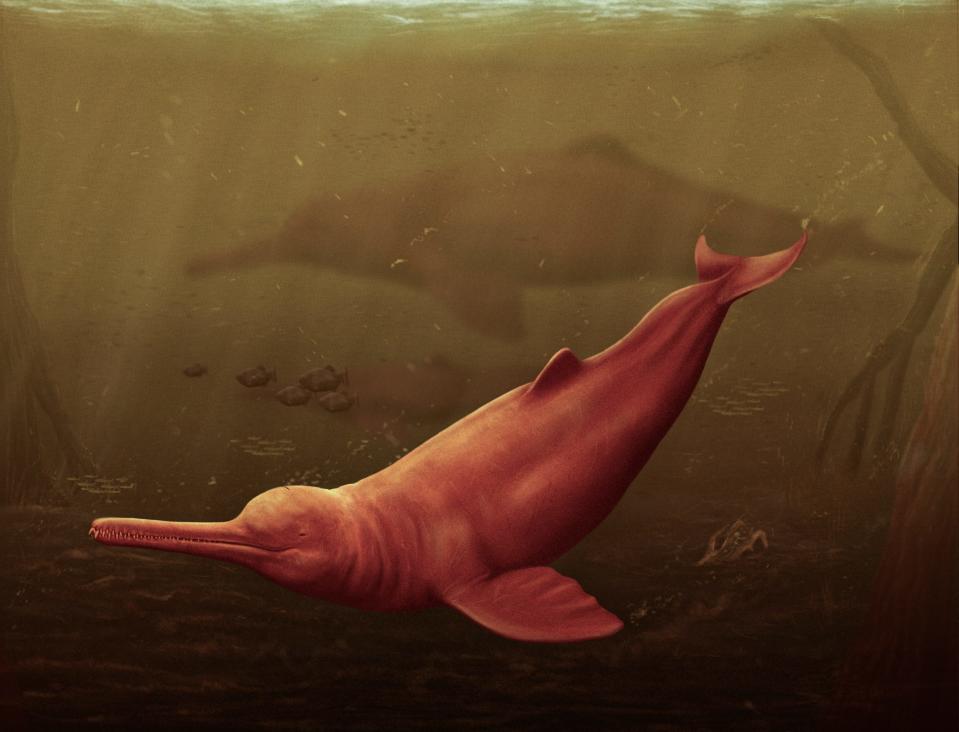'The first dolphin of its kind:' Remains of ancient giant dolphin discovered in the Amazon.
Scientists Wednesday announced the discovery of the 16-million-year-old remains of the largest river dolphin ever found on Earth. A skull of the long-extinct creature was uncovered in the Amazon in Peru in 2018.
"This is the first dolphin of its kind,” said Marcelo R. Sánchez-Villagra, director of the department of paleontology at University of Zurich, which led a new study about the findings. It could be among the largest of all known freshwater dolphins, scientists said.
And, surprisingly, scientists also said that its closest living relatives today are the river dolphins of South Asia, not the current river dolphins of the Amazon.

Dolphin named after a mythical aquatic people
The new species was given the Latin name "Pebanista yacuruna" after a mythical aquatic people – the Yacuruna – believed to inhabit the Amazon basin, according to the study.
The new dolphin species belongs to the group known as the Platanistoidea, a group of dolphins that were common in the world’s oceans between 24 million and 16 million years ago, according to a statement from the University of Zurich.
Physical features of the skull – including its long snout, large teeth, and well-developed forehead area – indicate that the dolphin was fully adapted to freshwater environments.
'Almost completely blind'
Much like their modern relatives, these dolphins were most likely thickset with long snouts and small, almost completely blind eyes, and relied primarily on echolocation to navigate muddy waters.
They also had highly developed facial crests, which are specialized bony structures associated with echolocation – the ability to “see” by emitting high-frequency sounds and listening or their echoes, which they rely on heavily for hunting.
“For river dolphins, echolocation, or biosonar, is even more critical as the waters they inhabit are extremely muddy, which impedes their vision,” explained Gabriel Aguirre-Fernández, a University of Zurich researcher who also participated in this study, in a statement. The elongated snout with many teeth suggests that Pebanista fed on fish, as other species of river dolphins do today.
Nearest relative today is in South Asia
The ancient dolphin's closest relative today are the river dolphins of South Asia, specifically of the Ganges and Indus rivers in India, the study said.
“We discovered that its size is not the only remarkable aspect,” said study lead author Aldo Benites-Palomino from the department of paleontology at the University of Zurich. “With this fossil record unearthed in the Amazon, we expected to find close relatives of the living Amazon River dolphin – but instead the closest cousins of Pebanista are the South Asian river dolphins.”
The study was published in the peer-reviewed journal Science Advances, a publication of the American Association for the Advancement of Science.
This article originally appeared on USA TODAY: Remains of ancient giant dolphin discovered in the Amazon

